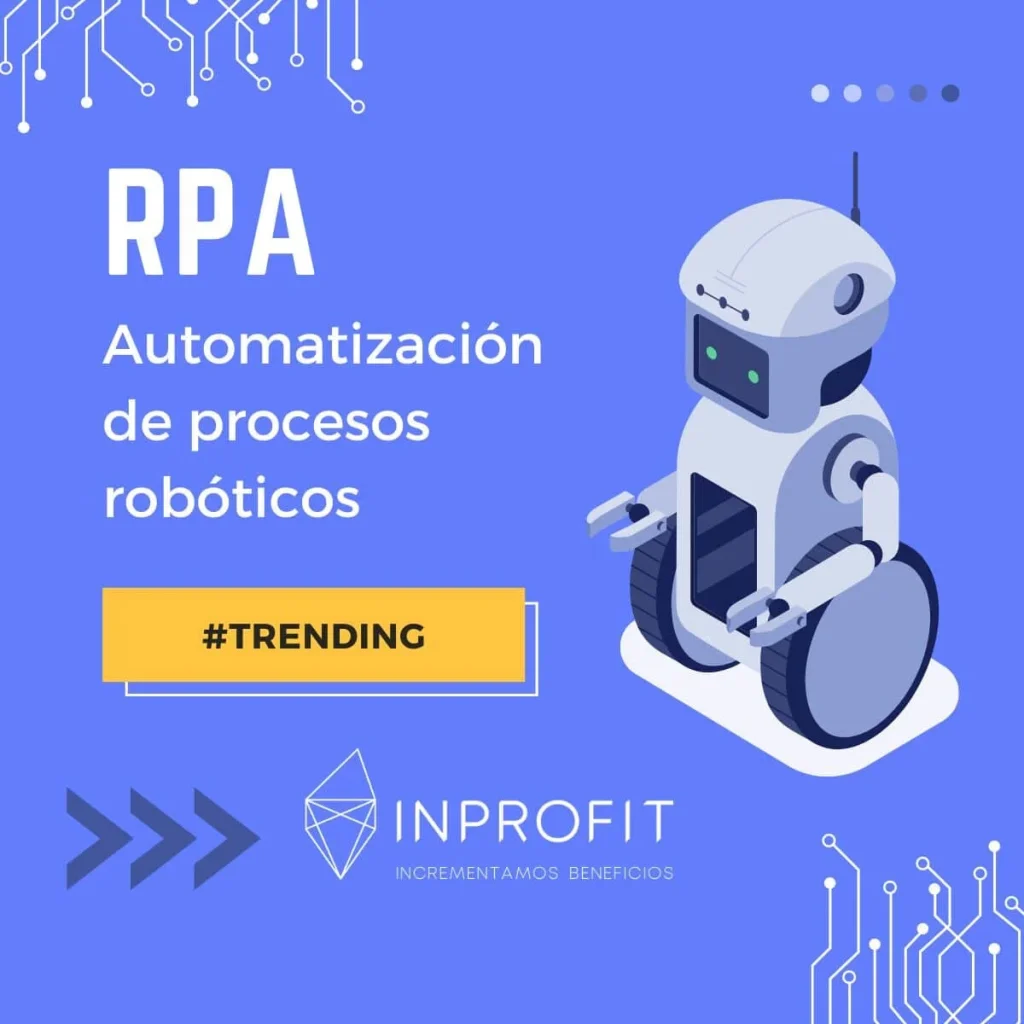From freeing employees to tackle more complex challenges to streamlining processes and saving costs, the potential of RPA is enormous.
In this blog post, we’ll explore how companies are leveraging this trend to transform their operations, highlighting some real-world examples that can show us what a successful implementation looks like. So put on your shoes and get ready to take a walk through the exciting world of robotic process automation.
RPA What is it and how can it benefit your company?
RPA is an increasingly popular technology trend, and many companies are eager to explore and invest in it. RPA stands for Robotic Process Automation, and refers to the use of software robots or intelligent technology to automate repetitive, high-volume tasks associated with transactions, data manipulation and processing.
By adopting RPA in their workflows, companies can improve data accuracy, reduce manual errors and speed up operational processes, resulting in faster results and higher quality products/services, this is known as Hyper-automation. In addition, RPA also frees up staff time to focus on more complex projects that require creativity or analytical capabilities, whether in the product development process or customer experience.
In short, introducing RPA in your company can help you gain a competitive advantage and improve efficiency.
Identification of processes that could benefit from automated robotics
Automated robotics can offer a great solution for certain industries, as they are designed to perform repetitive tasks quickly and accurately.
Determining when best to incorporate them is an intuitive decision that must take into account costs as well as potential performance improvements. Companies often consider high-volume production processes to be the most ideal candidates for automation, with tasks requiring accuracy, speed and reliability a close second.
Depending on the situation, robots can be used to increase production or efficiency, reduce downtime, improve safety and accuracy, or free up human workers for more complex tasks.
No wonder so many companies are embracing robotic automation: it is now easier than ever to use robots to optimize processes while meeting specific business needs.
Advantages of using RPA to streamline operations
Companies of all sizes are using automation technology through Robotic Process Automation (RPA) to increase productivity and efficiency levels. Companies are realizing how important it is to reduce mundane activities that hinder their operations, and RPA is the perfect solution.
Robots take care of basic tasks, reducing the manual labor of employees and allowing them to focus on more important and higher value-added tasks.
It is also much more cost-effective compared to human labor and the process can be completed much faster. In addition to these advantages, companies can benefit from increased data accuracy when robots take over repetitive monitoring processes. In short, RPA is a game changer in process optimization.
Implementation of RPA in your organization and the costs it entails
Implementing robotic process automation (RPA) in your organization can certainly be a cost-effective way to streamline processes and ensure that routine tasks are managed efficiently.
The initial investment may seem high, but the long-term benefits of this type of automation can be substantial. At the same time, however, it is important to consider the associated costs that RPA can entail; this includes not only installation fees and maintenance plans, but also the costs of training your team members to successfully integrate RPA into their daily routines.
Taking time to consider all of these potential costs will ensure that there are no unexpected financial surprises along the way.
Different types of robotic process automation
Robots are becoming more and more ubiquitous in the 21st century and play an increasingly crucial role in both industry and domestic life.
When it comes to robotic process automation, there is a wide range of different robots used for a variety of purposes. From humanoid models equipped with sensors and interactive capabilities suitable for customer service tasks, to robotic arms programmed to complete precise industrial operations.
But broadly speaking, we identify two types of solutions: those robots that work on deterministic processes and use structured data and rule-based processes and, on the other hand, those that manage undefined processes, through probabilistic learning and dealing with unstructured data.
The future promises even higher levels of intelligent robotics, as engineers push the boundaries of what automation can do now toward autonomous robots capable of making decisions in response to their environment.
The future of RPA
Robotic process automation (RPA) is an exciting new technology that can revolutionize the way companies operate. By allowing machines to handle mundane, labor-intensive tasks, companies can free up valuable time and resources to focus on more strategic and meaningful projects.
Automation also promises to reduce the costs and errors associated with manual data processing, resulting in greater efficiency and productivity. These benefits are already being seen in a variety of industries, with some estimates predicting that nearly 80% of organizations will be using RPA by 2026 either directly or indirectly.
This incredible growth in automation is helping to drive innovation, improve customer satisfaction and create new opportunities for companies around the world. It’s no wonder that RPA is such a hot topic: it looks like this technology will shape the future of business for many years to come.
In conclusion, robotic process automation (RPA) is the use of robots to automate repetitive and more complex tasks. Through RPA, organizations are finding ways to streamline their operations and save money. With the right implementation and configuration of robots, companies can experience significant benefits in terms of cost savings, increased efficiency and increased productivity. Companies should consider different types of robots when choosing a solution.
The future of robotic process automation is also very promising and could have significant implications for companies in the coming years if they adopt it strategically in their operations.
It is important that we all know how RPA works so that we can make informed decisions about how it can benefit our businesses as well as our work lives.
Technology consulting and digital transformation
If you are thinking of implementing solutions to optimize the resources and operation of the company, at Inprofit we work with the latest market solutions to achieve a complete digital transformation addressing two cross-cutting areas of companies such as Marketing and Technology.
Our team of experts will provide you with a project plan tailored to your needs with measurable results. We believe that one size does not fit all and we strive to develop customized solutions for our clients to help them achieve their goals.
Doubts? Inquire today for more information.




